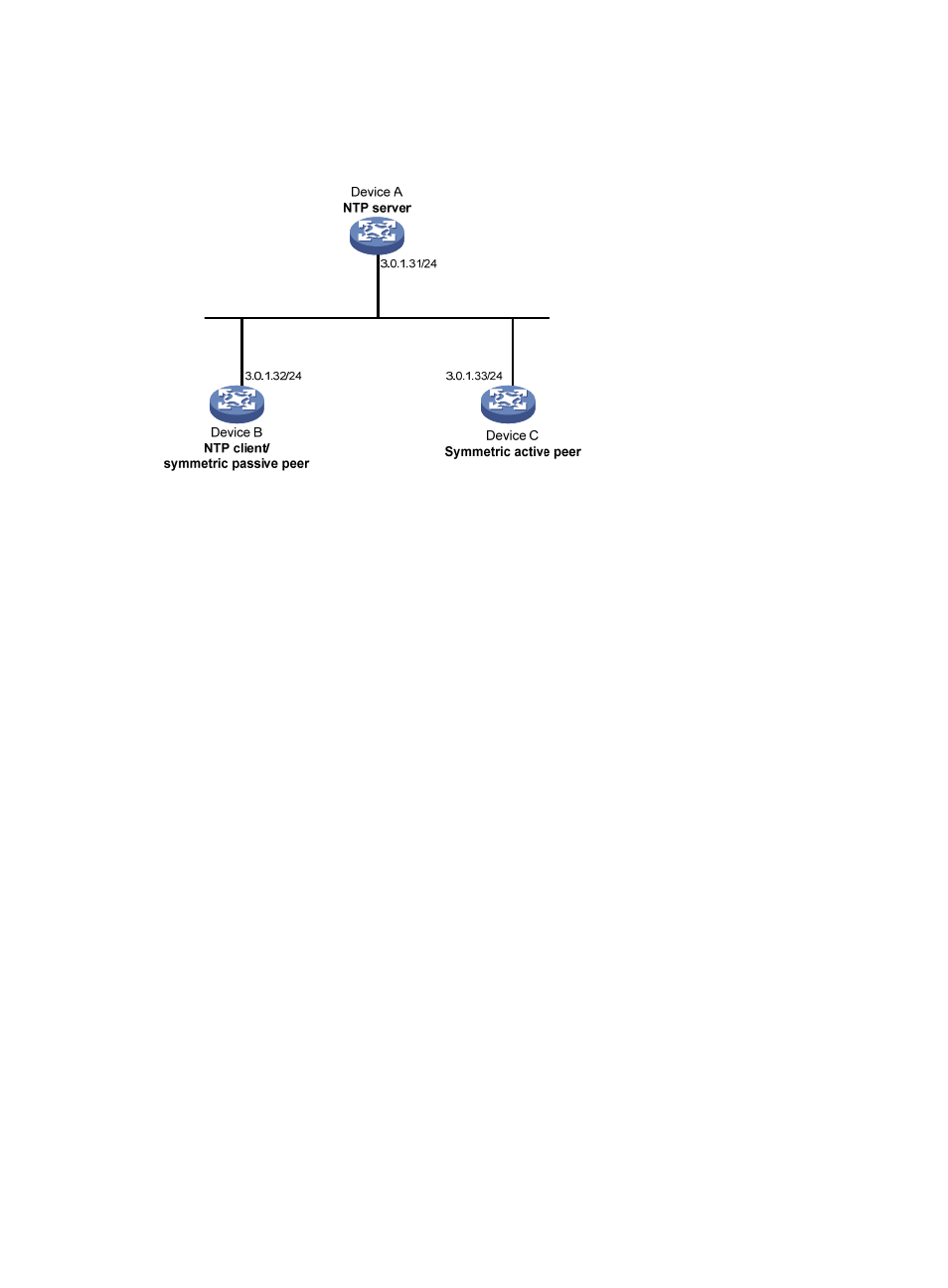Configuration procedure – H3C Technologies H3C MSR 5600 User Manual
Page 96

83
•
Configure Device C to operate in symmetric-active mode and specify Device B as the passive peer
of Device C.
Figure 31 Network diagram
Configuration procedure
1.
Set the IP address for each interface as shown in
. (Details not shown.)
2.
Configure Device A:
# Enable the NTP service.
[DeviceA] ntp-service enable
# Specify the local clock as the reference source, with the stratum level 3.
[DeviceA] ntp-service refclock-master 3
3.
Configure Device B:
# Enable the NTP service.
[DeviceB] ntp-service enable
# Specify Device A as the NTP server of Device B.
[DeviceB] ntp-service unicast-server 3.0.1.31
4.
Configure Device C:
# Enable the NTP service.
[DeviceC] ntp-service enable
# Specify the local clock as the reference source, with the stratum level 2.
[DeviceC] ntp-service refclock-master 2
# Configure Device B as a symmetric passive peer.
[DeviceC] ntp-service unicast-peer 3.0.1.32
5.
Verify the configuration:
# After the configuration, Device B has two time servers Device A and Device C. Device C has a
lower stratum level than Device A, so Device B selects Device C as a reference clock to synchronize
to Device C. After synchronization, view the status of Device B. The output shows that Device B has
been synchronized to Device C.
[DeviceB] display ntp-service status
